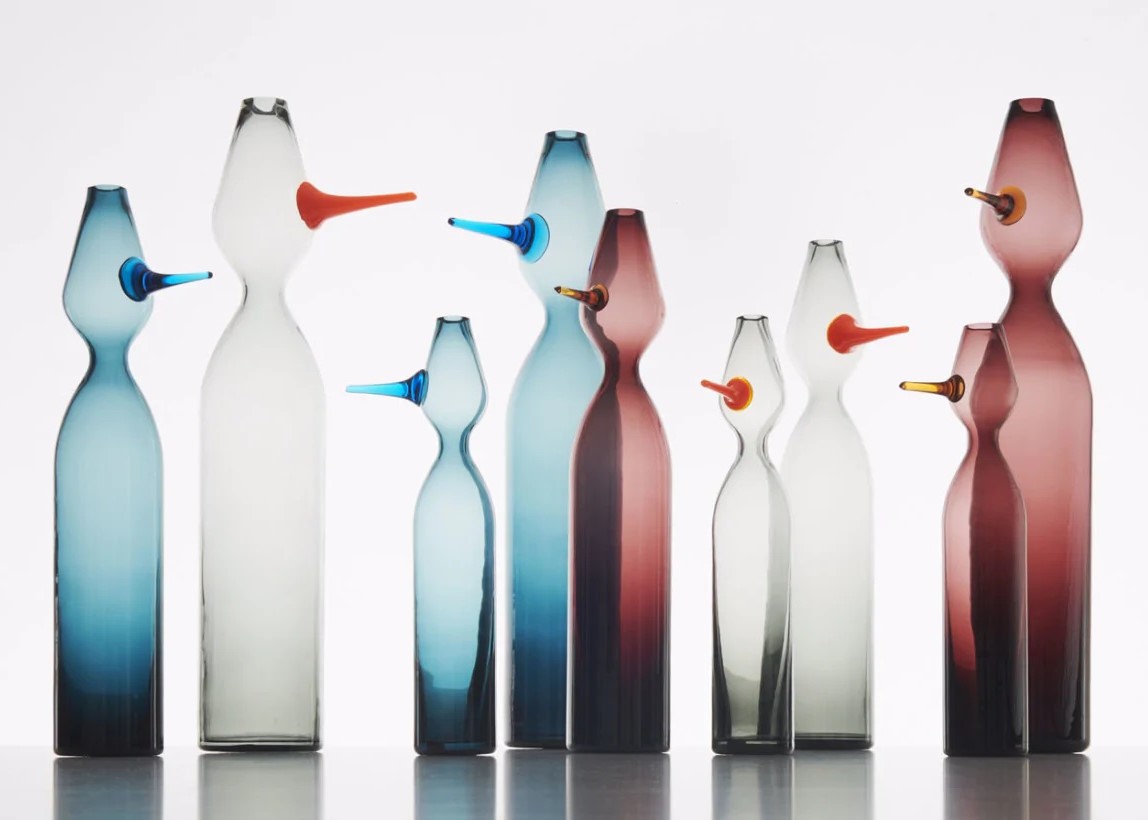
In 2019 at the Salone del Mobile was presented Pinocchio, a Murano blown glass vase with the strong features of the well-known character of Carlo Collodi, created by Italian designer Giulio Iacchetti for Internoitaliano. It is a tribute to one of the most representative icons of the Italian spirit in the world that has its strong point in the nose, made of white glass paste. The length is variable, depending on the inspiration of the master blower, so that each piece is unique. The vase can hold one flower at a time, never a bunch, but who cares: it's beautiful.
In 2016, Emanuele Magini designed for JCP Universe Osforth a high-backed seat covered with a long, precious ruby capitonnée rug. A bulky seat, certainly not ergonomic, but who cares: is fairytale-like.
Many years earlier, Massimo Giacon brought his intellectual and underground cartoonist style to the world of design. He created a limited edition of 50 handmade ceramic sculptures from the “Pop Will Eat Himself” collection, including Paperocchio, a cute duck with a squinting look produced by Superego Editions. The name “Paperocchio” comes from the union of "Paperino", Donald Duck, and "occhio", eye. Is Paperocchio useful? No, but who cares, he's fun.
However, this is also design, a category that now applies to everything (if you look it up on google you'll find that it totals 11,670,000,000 results, more than "Love" with 10,940,000,000 results and even more than "Sex" with 5,090,000,000).
Then came coronavirus and with it Christian Fracassi’s diving mask modified to make it usable on patients in intensive care units: and here it comes, on social media, such messianic phrases as "finally, here is a useful design". The same comment came for Giulio Iacchetti’s open source idea (i.e., the drawings to make it are downloadable and usable by all) of protective visor: a sheet of acetate properly shaped to be attached to the glasses for personal protection.
In other words, after years of binge eating cute and funny things, the pandemic seems to have put the value of utility back in vogue, reopening the debate on (un)useful design. And so the question arises spontaneously: does a performing, concrete and functional design really exist, as opposed to a carefree, fun, exuberant and a little bit butterfly-like design?
To the fanatics of pragmatism comes in aid the phrase attributed to Bruno Munari, one of the most important designers of the last century, according to which "there are more chairs than asses". And so what? Since there are too many chairs, let's make a moratorium on chair projects and maybe, after having zeroed the projects of new chairs, let's start to take care and count tables, cutlery and bedside tables?
In his book "L'utilità dell'inutile" (The usefulness of the useless) Nuccio Ordine claimed that "useful is everything that makes us better" and then, perhaps, we could apply to design the same tolerance and benevolence that is used for literature. Would it ever occur to anyone to establish that a booklet of instructions on how to use a washing machine is more useful than a collection of poetry by Eugenio Montale?



